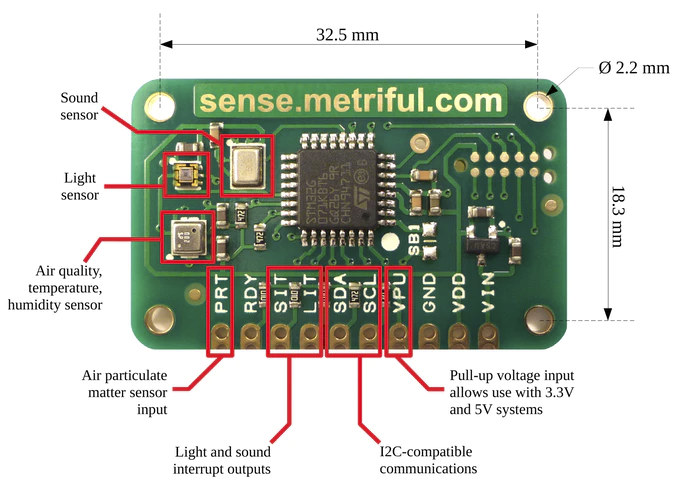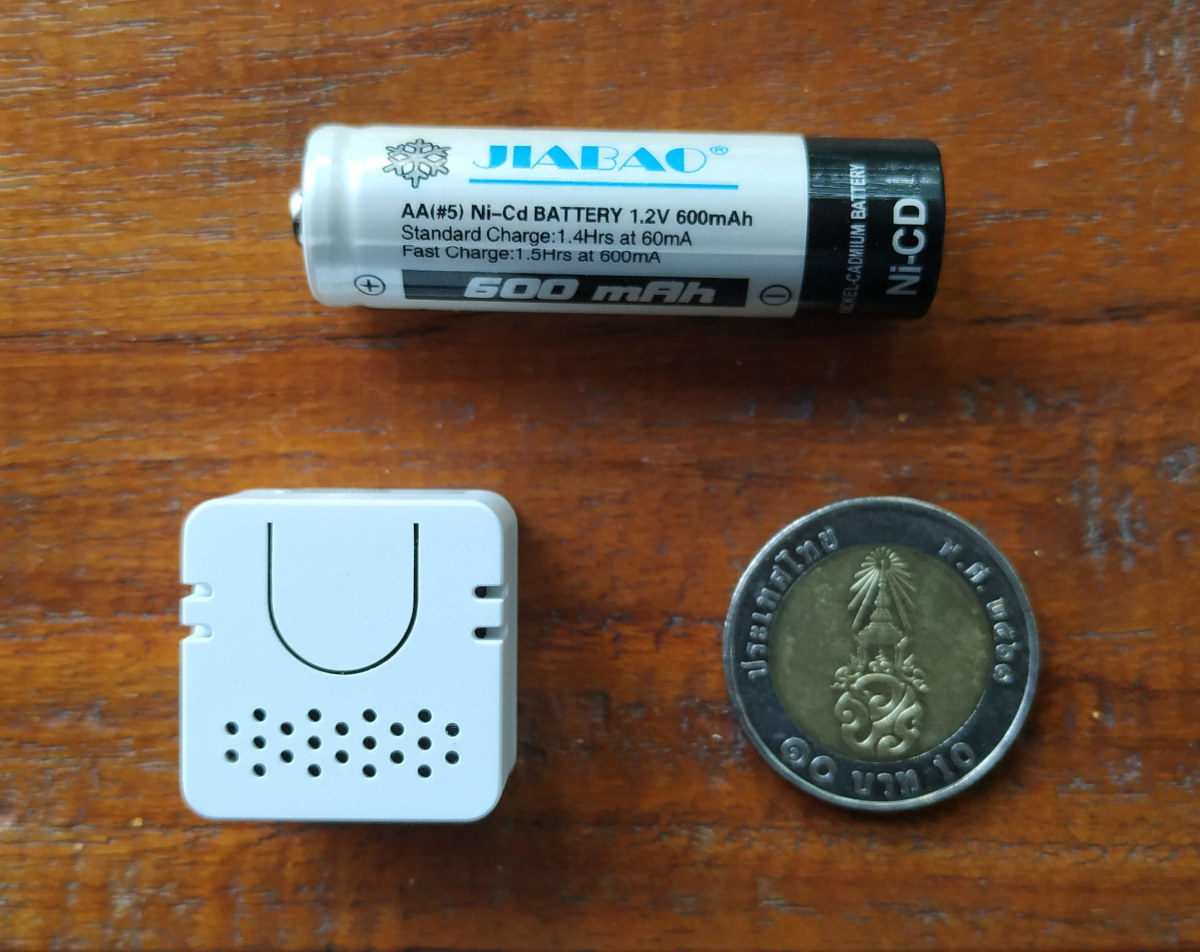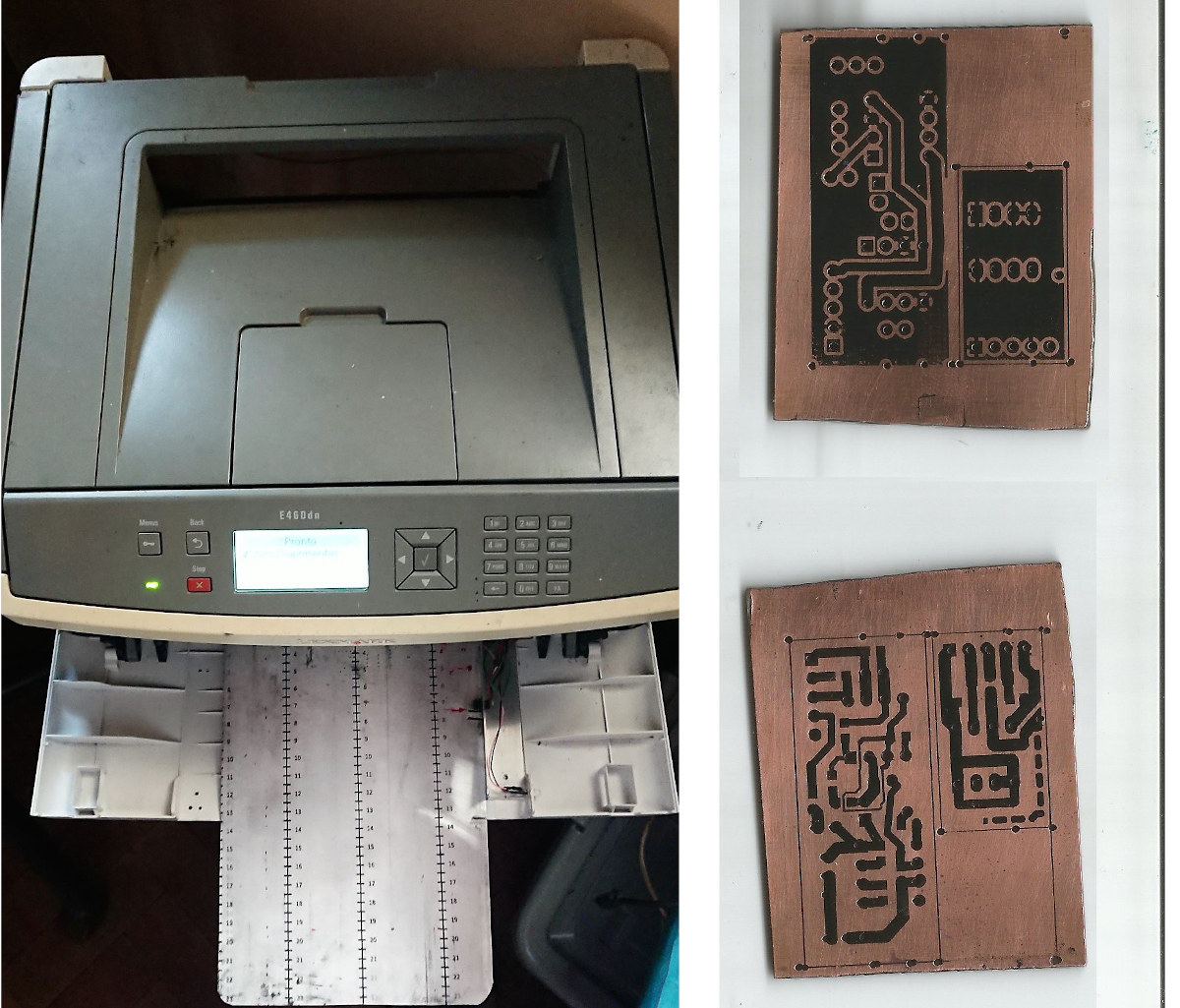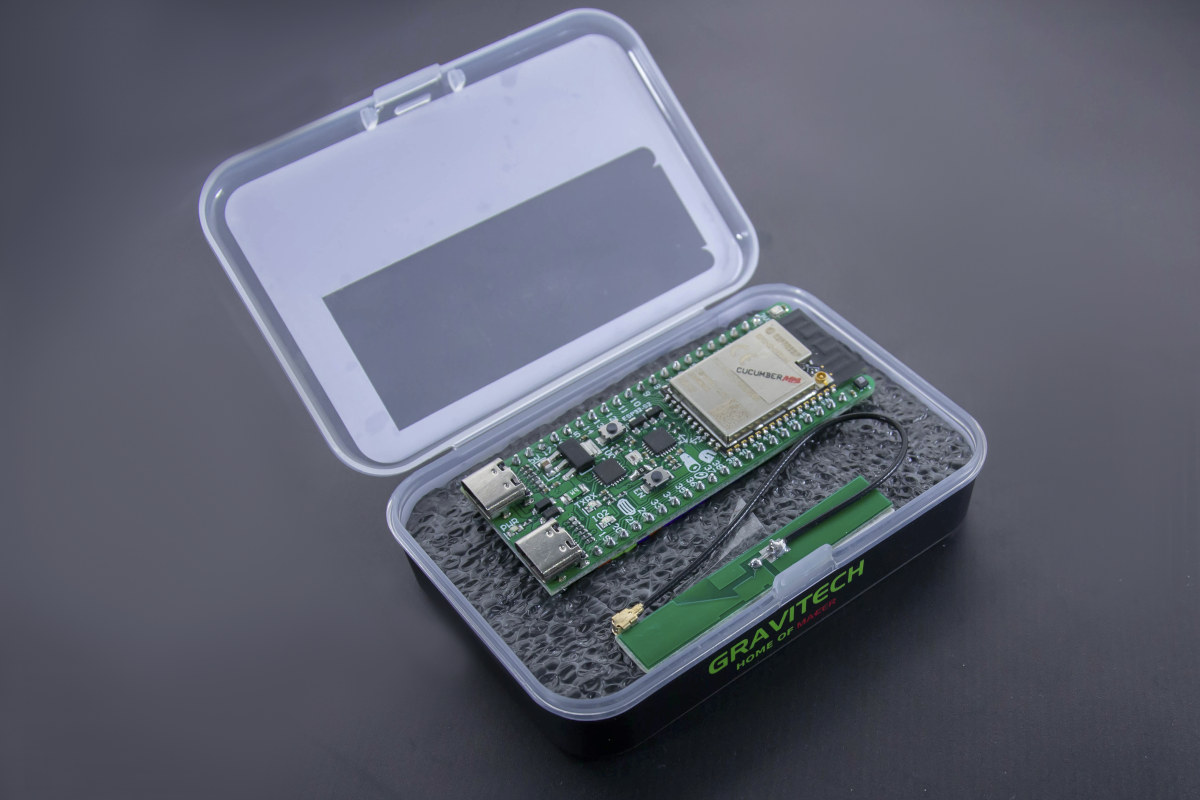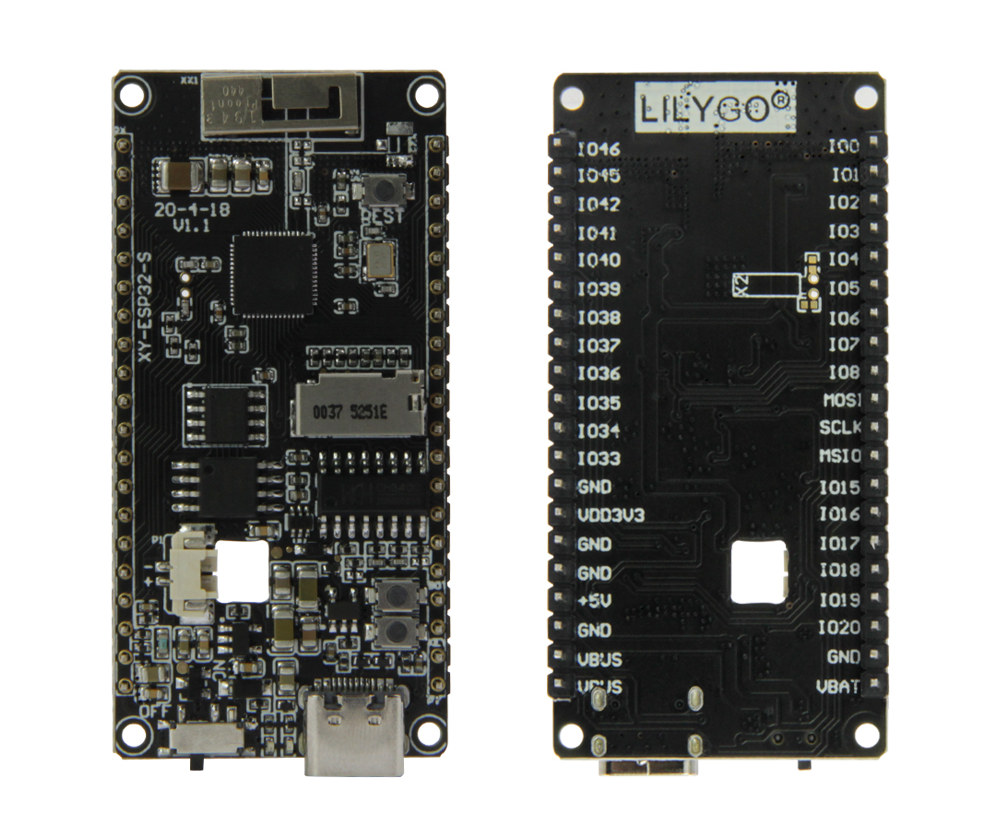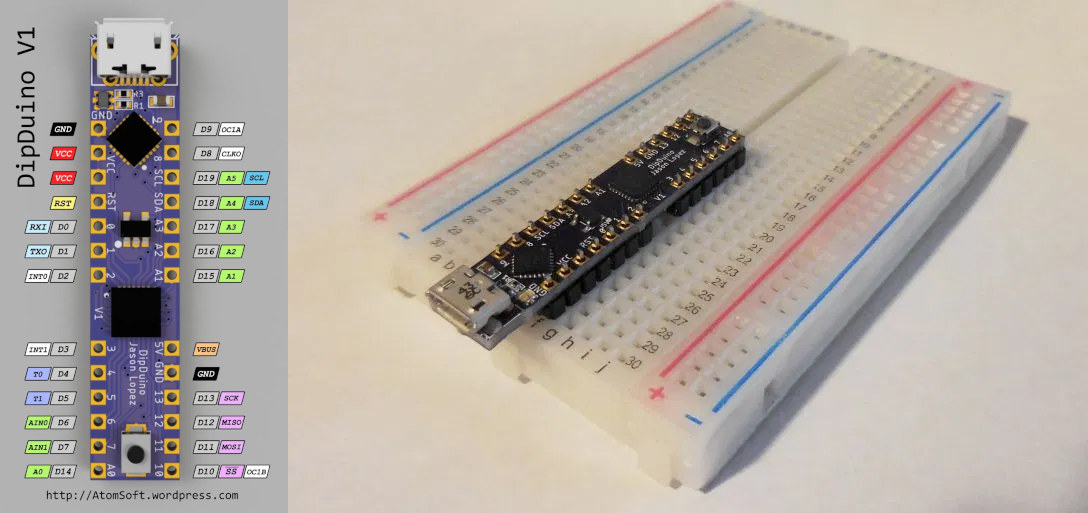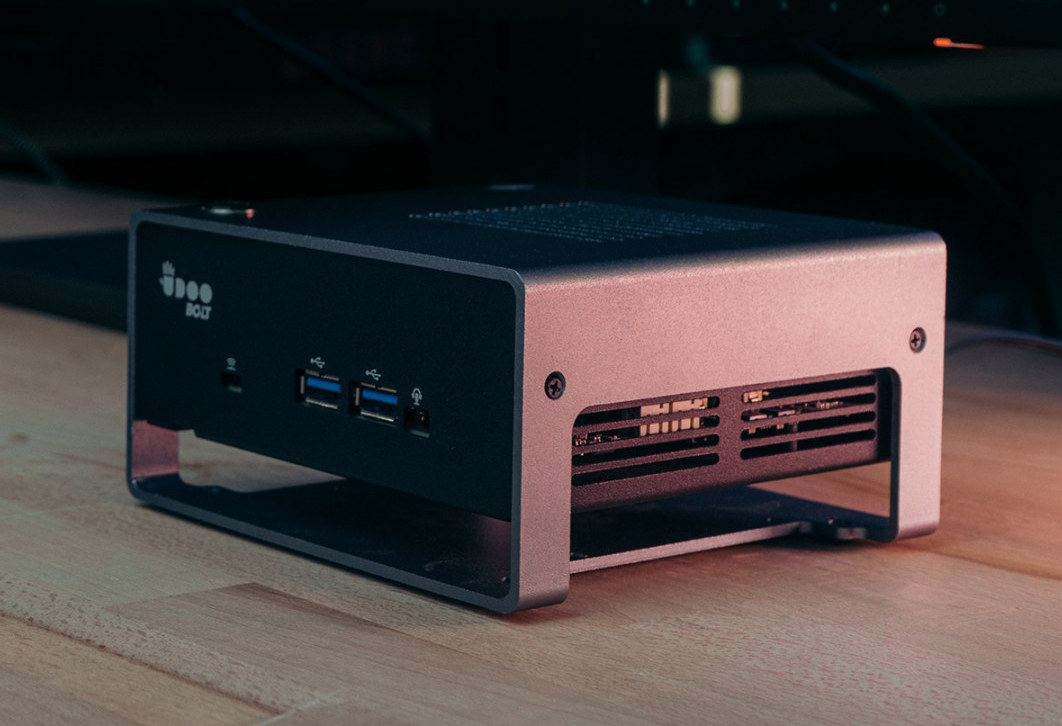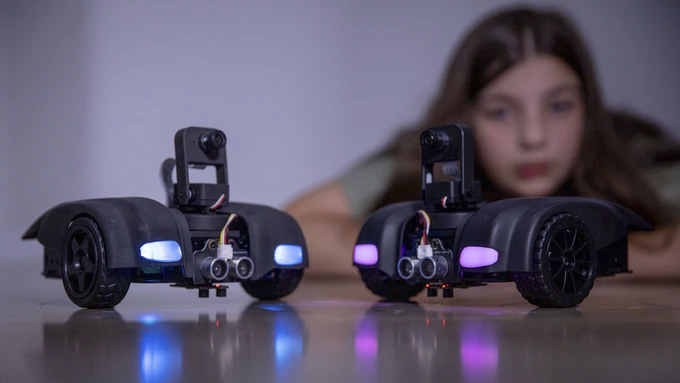Even before the COVID-19 lockdown, people spent most of their time indoors (around 90% according to some studies), so it’s important to monitor air quality and other metrics like light and sound levels in our homes, workplaces, schools, cars, etc… Metriful Sense indoor environment monitor does just that by reporting multiple metrics such as temperature, humidity, particle concentration, etc… over I2C to microcontroller or processor boards such as Arduino or Raspberry Pi. Sense hardware specifications: MCU – STMicro STM32G071KB Arm Cortex-M0+ microcontroller @ 64 MHz with 128 KB Flash, 36 KB SRAM Sensors Bosch Sensortec BME680 4-in-1 air quality sensor with relative humidity, barometric pressure, ambient temperature, and gas (VOC). Vishay VEML6030 ambient light sensor Knowles SPH0645LM4H-B MEMS microphone Optional – Shinyei PPD42 particle sensor unit I/Os – 10-pin unpopulated header with air particles sensor input, light and sound interrupt outputs, I2C, VPU pin for 3.3V/5V selection, GND, VDD, VIN […]
M5Stack Atom Echo Coin-Sized Bluetooth Speaker is Powered by ESP32-PICO-D4 SiP
M5Stack has just launched Atom Echo, a coin-sized programmable Bluetooth speaker based on Espressif Systems ESP32-PICO-D4 system-on-package. The company sent me an early sample to play with before launch… but let’s have a look at the specification before checking the device further. Specifications: SiP – Espressif Systems ESP32-PICO-D4 system-in-package with ESP32 dual-core processor @ 240MHz Wi-Fi, BLE 4.0 and 4MB flash Audio 0.5W/NS4168 I2S speaker SPM1423 PDM microphone Expansion 5-pin + 4-pin headers with 6x GPIOs, UART, 5V, 3.3V, GND 4-pin digital Grove header with 2 I/Os, 5V and GND Misc – RGB LED (SK6812), Function (Top – G39 pin) and reset buttons (side), IR LED Power Supply – 5V/500mA via USB-C port Dimensions – 24 x 24 x 17mm (plastic material) Weight – 10 grams The Bluetooth speaker is really small, but you may think CNXSoft has big hands and fat fingers so it makes the speaker smaller than […]
Make PCB’s with a Modified Lexmark Laser Printer
PCB manufacturing services are pretty cheap and fast nowadays. But imagine some kind of highly transmissible virus hits the globe, somehow the whole global economy shuts down, and you are stuck alone at home with nothing but a Lexmark laser printer. What can you do? Well, you can make your own PCBs! No paper involved. That’s exactly what Vítor Barbosa did by converting a Lexmark E460(DN) laser printer into a PCB making machine, not because of COVID-19, but instead, because of the price and delays of ordering PCBs in Brazil. Using a laser printing to make your own PCB like take some work, notably to strip the printer of unused parts such as the fuser and fit it with Arduino Nano or Pro Mini board, an aluminum guide, some resistors and more. The modifications are all explained on Hackaday.io, and this is not a new idea as the project was […]
Cucumber ESP32-S2 Development Board Comes with USB OTG Port, Optional Sensors
Yesterday, I wrote about LilyGO TTGO ESP32-S2 WiFi IoT board, but one commenter mentioned it missed one of the key features of ESP32-S2 chip: a USB OTG port. While USB OTG is accessible through the header pins, it’s not the most convenient to use. I also quickly mentioned Cucumber ESP32-S2 development board in that post, but I did not expand too much since I thought it should only ship within Thailand. But the board does include two USB Type-C ports, one for the usual USB UART connector, and the other for USB OTG, and I found out the board is available worldwide. The board is available in multiple variants with or without sensors and PSRAM, and with external IPEX antenna or PCB antenna using ESP32-S2-WROVER(-I) or ESP32-S2-WROOM(-I) module. Cucumber specifications: Wireless Module (one of the other): ESP32-S2-WROVER with ESP32-S2, 4MB flash, 2MB PSRAM, on-board PCB antenna ESP32-S2-WROVER-I with ESP32-S2, 4MB […]
TTGO ESP32-S2 WiFi IoT Board Comes with Optional MicroSD Card and Battery Support
All ESP32-S2 boards I’ve seen so far were from Espressif Systems themselves including ESP32-S2-Saola-1 and ESP32-S2-Kaluga-1, but LilyGO TTGO ESP32-S2 is the first third-party board for sale so far. The tiny board is somewhat similar to ESP32-S2-Saola-1 board and comes in two versions with a similar form factor, but a completely different pinout and the presence of a MicroSD card socket and a battery connector on one of the boards. The simpler board is called “ESP32-S2 ESP32-S-WOOR” and comes with ESP32-S2-WROOM module, while the one with more features is named “TTGO ESP32-S2 ESP32-S ” and features its own circuitry built around ESP32-S2 WiSoC. Both TTGO ESP32-S2 boards share many of the same specifications: SoC – Espressif Systems ESP32-S2 single-core 32-bit Tensilica LX7 processor with 320 kB SRAM, 128 kB ROM, System Memory – 8MB PSRAM Storage – 4MB flash; XY-ESP32-S only: MicroSD card socket Connectivity 2.4GHz 802.11b/g/n WiFi 4 connectivity […]
Ultra-narrow DipDuino Arduino Compatible Board is a Perfect Breadboard Companion
We previously wrote about a uChip DIP-sized Arduino Zero compatible board with 0.3″ spacing between the two rows of pins making it perfect for breadboards as it left four rows on each side of the breadboard. There’s now another similar option with the appropriately named DipDuino board equipped with a Microchip Atmega328P MCU compatible with Arduino Pro or Pro Mini boards. DipDuino specifications: MCU – Microchip Atmega328P 8-bit AVR MCU with 32KB flash, 1024 Bytes EEPROM, 2KB SRAM USB – 1x Micro USB port for power and programming via CP2104 USB to serial chip Expansion Two rows of headers spaced by 0.3-inch (7.62mm) with up to 21x GPIOs, 5x analog inputs, I2C, SPI, UART, Reset, VCC and GND I/O voltage – 3.3V or 5V (different versions of the board) Misc – RGB LED for power and UART Tx/Rx; reset button Power Supply – 5V via Micro USB port; LDO for […]
UDOO BOLT GEAR AMD Ryzen Embedded V1605B Mini PC with Arduino Subsystem Launched for $399
UDOO BOLT was one of the first AMD Ryzen Embedded V1000 SBC‘s ever announced with a choice of Ryzen Embedded V1202B or V1605B dual-core/quad-core processor, and a Microchip ATmega32U4 MCU for real-time I/Os and Arduino compatibility. The company has now launched UDOO BOLT GEAR mini PC based on UDOO BOLT V8 SBC at a promotional price of $399 excluding taxes and shipping. [Update: code VOLUMIOGEAR might work to get a €60 discount] UDOO BOLT GEAR specification: SoC – AMD Ryzen Embedded V1605B quad-core/eight-thread processor @ 2.0GHz (3.6GHz boost) with Radeon Vega 8 graphics with support for Directx 12, OpenCL, OpenGL, Vulkan, H.265 Decode & Encode (8-bit), Vp9 Decode; TDP: 12W to 25W System Memory – 2x DDR4 dual-channel 64-bit SO-DIMM sockets With ECC for up to 32GB RAM @ 2400 Mt/s Storage M.2 Socket Key B 2260 for SATA SSD (also features PCI-e x2) M.2 Socket Key M 2280 for […]
MARK AI Robot Kit Aims to Teach AI & Robotics to 12+ Years Old (Crowdfunding)
We’ve written about Kendryte K210 RISC-V AI processor, and Sipeed M1 module several times including in our getting started for Maixduino and GroveAI HAT boards for low-power AI inference such as object recognition or face detection using Arduino and Micropython programming. Shenzhen-based Tinkergen, a STEM Education owned by Seeed Studio, has now leveraged the low-cost processor to design MARK AI robot kit, where MARK stands for Make A Robot Kit, in order to processor an educational AI Robotics platform for children ages 12 years old and more. MARK will ship as a kit with the main parts and components including a chassis, a cover, two wheels, stepper motors, a pan-tilt camera with K210 processor, a 2.4″ LCD display, Grove & Arduino compatible MARKduino interface board, some sensors, and six AA batteries. Tinkergen offers pre-trained model to recognized objects like humans, books, pens, or smartphones, as well as traffic signs, numbers […]


